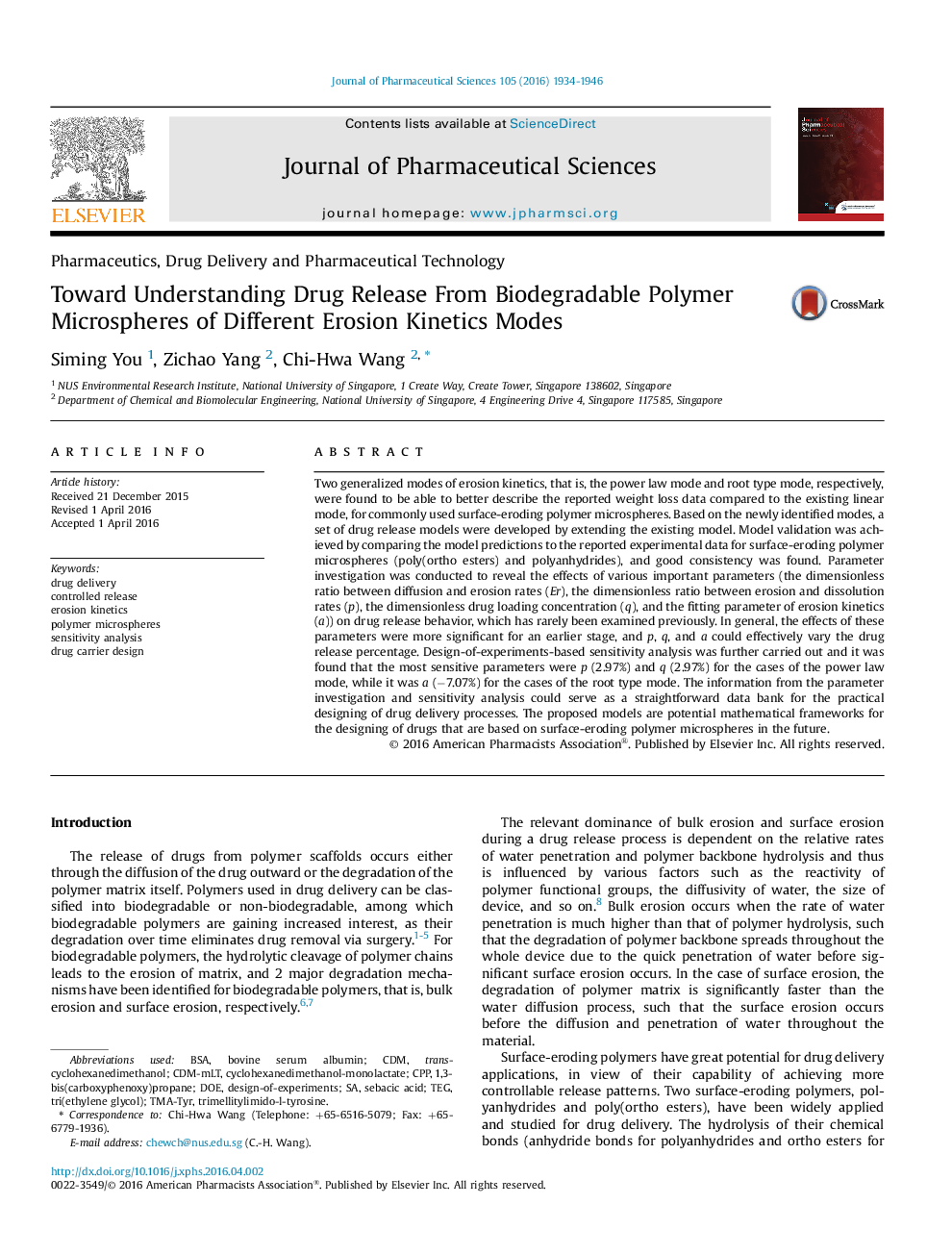| Article ID | Journal | Published Year | Pages | File Type |
|---|---|---|---|---|
| 10161911 | Journal of Pharmaceutical Sciences | 2016 | 13 Pages |
Abstract
Two generalized modes of erosion kinetics, that is, the power law mode and root type mode, respectively, were found to be able to better describe the reported weight loss data compared to the existing linear mode, for commonly used surface-eroding polymer microspheres. Based on the newly identified modes, a set of drug release models were developed by extending the existing model. Model validation was achieved by comparing the model predictions to the reported experimental data for surface-eroding polymer microspheres (poly(ortho esters) and polyanhydrides), and good consistency was found. Parameter investigation was conducted to reveal the effects of various important parameters (the dimensionless ratio between diffusion and erosion rates (Er), the dimensionless ratio between erosion and dissolution rates (p), the dimensionless drug loading concentration (q), and the fitting parameter of erosion kinetics (a)) on drug release behavior, which has rarely been examined previously. In general, the effects of these parameters were more significant for an earlier stage, and p, q, and a could effectively vary the drug release percentage. Design-of-experiments-based sensitivity analysis was further carried out and it was found that the most sensitive parameters were p (2.97%) and q (2.97%) for the cases of the power law mode, while it was a (â7.07%) for the cases of the root type mode. The information from the parameter investigation and sensitivity analysis could serve as a straightforward data bank for the practical designing of drug delivery processes. The proposed models are potential mathematical frameworks for the designing of drugs that are based on surface-eroding polymer microspheres in the future.
Keywords
Related Topics
Health Sciences
Pharmacology, Toxicology and Pharmaceutical Science
Drug Discovery
Authors
Siming You, Zichao Yang, Chi-Hwa Wang,
